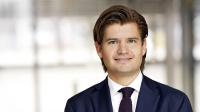Denmark is becoming a more attractive funds jurisdiction
Changes in 2018 to Danish financial regulation and tax laws have meant that Denmark is now becoming a fairly attractive funds jurisdiction. This article explains why and summarises the characteristics of the most common Danish fund structures.
Danish law allows for a suite of different fund structures that are cost-efficient and flexible to accommodate for the different needs of sponsors, managers and investors.
Elimination of permanent establishment taxation of foreign investors
On 1 July 2018 an adjustment to the Danish tax rules for permanent establishments of foreign investors entered into force (see Investor Update November 2018). The new rules alleviated concerns that foreign passive investors in certain Danish fund structures, such as private equity or venture funds, would become subject to Danish permanent establishment taxation. Potentially, the new rules will make Danish investment funds more attractive for foreign investors.
Most common fund structures
Below is a summary of key features of some of the most used or novel types of fund structures available under Danish law.
| Fund vehicle/Key feature | Danish Limited Partnership (in Danish: Kapitalforening) | Capital association (in Danish: Kapitalforening) | AIF-SIKAV |
|---|---|---|---|
| Limited liability | Yes | Yes | Yes |
| Investment restrictions | None | Financial instruments (as defined in MiFID II, Annex 1, Section C) | None |
| Compartment structure possible | Possibly by contract but not by statute | Yes | Yes |
| Tax transparent | Yes | No | No |
| Flexibility on governance | Yes, although the GP must be granted certain governance and financial rights | Governed by a BoD and an alternative investment fund manager | Governed by a BoD and an alternative investment fund manager |
| AIF | Yes, depending on whether it raises capital from a number of investors for the purpose of investing it in accordance with a defined investment policy for the benefit of those investors | Yes, by definition | Yes, by definition |
| Allows for commitment-based capitalisation with capital calls | Yes | Yes | Yes |
Unlike Luxembourg, traditionally a large fund jurisdiction, none of the Danish fund vehicles are subject to any requirement to be licensed by the Danish Financial Supervisory Authority (unless organised as self-managed alternative investment funds under the Danish Alternative Investment Fund Managers Act).
The Limited Partnership
The limited partnership seems the logical choice for a single-strategy fund and is typically used for buy-out funds, loan funds, infrastructure funds, etc. It offers tax transparency and a high degree of flexibility to govern the rights of the limited partners and the general partner in the limited partnership agreement. With jurisprudence dating back to its introduction as a legal organisation form in the second half of the 19th century1, there is a considerable degree of legal certainty to rely on.
The Capital Association
Since its introduction as a legal organisation form in 2013, the capital association has been used inter alia (i) as a fund-of-one multi-strategy investment vehicle of a particular life insurance company or pension fund, where each strategy is handled in a separate compartment, or (ii) as an umbrella fund offering multiple institutional investors with different strategies to invest through their own compartment in a cost-efficient structure with a joint alternative investment fund manager, one depositary, and one set of Articles of Association.
The AIF-SIKAV
The AIF-SIKAV is the newest type of fund structure and – like the Luxembourg RAIF – offers a great degree of flexibility to support any type of investment strategy, governance, and investor composition.
It is a separate type of company governed by Part 23 of the Danish Alternative Investment Fund Managers Act with limited liability for its investors and a variable capital (i.e. like a Luxembourg SICAV, it offers issuance and redemption of shares without having to comply with the onerous rules on increase and reduction of share capital in a typical limited liability company).
It may be open-end or closed-end depending on the sponsor's preference.
An asset manager wishing to offer its customers the opportunity to invest in a wide variety of assets can establish an AIF-SIKAV with compartments for each asset class (equities, fixed income, real estate, hedge funds, PE funds, infrastructure, etc.) and then allocate the customer's funds to each of those compartments based on the individual customer's risk appetite, with the option of easily changing the strategic and tactical asset allocation over time.
Distribution
For fund managers with a global distribution strategy, Luxembourg and Irish funds have the advantage of being known brands (although this is more true in the UCITS space than in the non-UCITS space) which many investors will instinctively be comfortable with.
For funds with a Northern European distribution strategy, we believe it is relevant to consider one of the Danish fund structures. Denmark has a disproportionally large pension fund industry compared to the size of the country and thus a large potential investor base. For Danish institutional investors, the Danish fund vehicles will be recognised and generally preferred over, say, Luxembourg and Irish fund structures. For institutional investors in other Scandinavian countries, it should be relatively easy to become comfortable with the Danish fund vehicles, given the general similarities of the Scandinavian legal systems.
Political and regulatory climate
For fund sponsors and institutional investors alike, it will be reassuring to know that the Danish political climate is stable.
The Danish Financial Supervisory Authority is a sensible and generally pragmatic regulator. Passporting by a Danish licensed AIFM to market units or shares in a Danish fund in other EEA jurisdictions typically works smoothly.
1 The Danish Limited Partnership is modelled over the German Kommanditgesellschaft.
The article is part of Investor Update: August 2019

Contact

